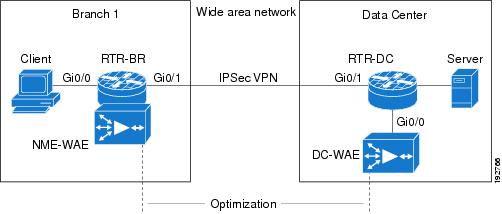In a world of growing technology and mobile workplaces, the need for remote support is more critical than ever. Although using remote desktops tools has become quite common in the last time, there may still be some concerns regarding security when using remote support tools. “If we install this software on our computers, can we be sure that no one outside the company can access our computers?” This is a question that we have heard quite often, that´s why we developed our whitelist feature.
Overview
This is the Linux content page of the CL Wiki Service Desk Knowledgebase. Its purpose is to provide information to the Service Desk team on how to handle problems and requests about this CL service. If you are involved with the provision of this CL service please feel free to add to the knowledge about that it. Important Note: HPE Support Center is currently scheduled for planned maintenance between June 19, 2021 6:00 AM PDT and June 19, 2021 12:00 PM PDT. During this time, some site features may be temporarily unavailable. We apologize for this inconvenience. Note: Recent support center enhancements may require current bookmarks, pre-selected filters. Access Control List. Limit access to your device by using a whitelist. Incoming session requests from IDs/Aliases that do not match at least one listed criterion will be blocked automatically. Wildcards are supported. For example to allow access from all members of a namespace called namespace add.@namespace to the list.

Desk Rt Acl Denied Service
As you know, to start a session, you need the computer’s AnyDesk address. The request must then be confirmed by the computer user before the session is established. The whitelist sets out exactly who is authorized to access your computer. If the whitelist is active, only a pre-defined group of people will be able to connect. This ensures that nobody who isn’t authorized to do so can start a session. The whitelist could contain all the computers in your IT department, for example. Or perhaps just your own personal laptop, so that requests can only be made from there.
Setting up your whitelist
Desk Rt Acl Denied Symptoms
You can find the Access Control List in the security tab of the AnyDesk settings. In order to activate access control, the security tab has to be unlocked. Use the + button to add an entry. A text entry will appear at the bottom of the list. Entries can be removed using the “-” button after they have been selected. After setting up the list, only users who are on the whitelist have the ability to access that particular device.
Wildcards (* and ?) are supported to match against an alias (pc-1@ad). This is useful for example to restrict connections to a specific company (e.g. *@company will grant access to service-1@company, service-2@company, but not to trudy@competitor) or even to specific hosts (e.g. service-?@company will grant access to service-1@company and service-2@company, but not to sales-1@company). Wildcards do not apply to numerical ids.
At AnyDesk, we pride ourselves in putting our customers and users first, always working to ensure our solutions are the best available in the market. Please keep in mind that we are planning to bring you more security features that will allow you more detailed control on who can access which computer.
AnyDesk 3.0 is now available for free download at ttps://anydesk.com/download This version is currently only available for Windows PCs (Windows XP or higher). MAC and Linux versions will follow. If you would like to request a free Professional trial, please fill out this form: https://anydesk.com/trial-licence
| User Interface | Security | Privacy | Display | Audio | Connection | File Transfer | Recording |
- 2Security
- 7Connection
- 7.3HTTP-Proxy
- 7.3.1NTLM
- 7.3HTTP-Proxy
User Interface
- Set language
- Show ID instead of Alias
- Hide local taskbar when window is maximized
- Ask for session comment after session
- The session comment will be sent to the AnyDesk Portal linked to the current licence.
- Open Address Book on startup
- Display Accept Window on incoming chat message.
- Each time a chat message arrives, the Accept Window will come to the foreground.
Security
Might need to be unlocked first (e.g. if AnyDesk is installed). This can be done by administrators only.
Desk Rt Acl Denied Claim
Interactive Access
Incoming session requests can either be automatically rejected or need user interaction.
In case Interactive Access is enabled, the Accept Window will be shown whenever an incoming session request arrives.
To start the session the request has to be accepted either by pressing 'Accept' in the Accept Window or by sending valid credentials (see Unattended Access).
There are three options for incoming session requests:
- Allow always
- Only allow when AnyDesk's main window is open
- Disable
Unattended Access
See Unattended Access.
Access Control List
- Limit access to your device by using a whitelist.
- Incoming session requests from IDs/Aliases that do not match at least one listed criterion will be blocked automatically.
- Wildcards are supported. For example to allow access from all members of a namespace called namespace add *@namespace to the list.
Updates
- Keep your AnyDesk client automatically up to date. This is not yet available for custom clients.
- Download updates and ask for installation.
- Disable auto-update.
- Beta version
Privacy
| User Name | A custom or user account name displayed in various locations. |
|---|---|
| User Image | A custom or user account image displayed in various locations, including the Accept Window. Can be disabled. |
| Desk Preview | A screenshot or wallpaper of your device displayed in the Address Book or the list of Recent Sessions of other AnyDesk clients. Can be disabled. |
| Screenshot Path | The path where to save screenshots made during a session. |
| Chat Log | The path where to save the chat log. Chat logging can be disabled from here. |
Display
| Quality | Choose between higher quality or a better reaction time. |
|---|---|
| Visual Helpers | These helpers give you better visibility of actions. Like:
|
| View Mode | Controls how the remote image is displayed locally: original size, shrinked or stretched.
|
| Hardware Acceleration | Choose your preferred renderer (OpenGL/Direct3D/DirectDraw) or disable acceleration.
|
| Individual Settings | Save settings for each desk or reset them after AnyDesk is restarted. |
Audio
More information on AnyDesk Audio can be found by clicking here.
Connection
Direct Connection
Direct connections are usually faster than those using a server to communicate. However, in some network environments the connection may be closed after some time,for example because of firewall interaction. Disable direct connections in the settings to avoid unexpected session ends.


Local Port Listening
For direct connections in the local network TCP Port 7070 is used for listening by default. This port is opened when installing AnyDesk.To specify a custom port go to Settings » Connection. (Must be set for all clients.)
HTTP-Proxy
AnyDesk supports using a Proxy Server. Available working modes are:

- disabled
- determined automatically (Proxy Auto-Config / PAC)
- specified

- IP
- Port
- Authentification
Note: The Proxy must support CONNECT Method. Authentification can be done with basic access, digest access, and NTLM as of AnyDesk for Windows 6.3.0.
NTLM
As of AnyDesk 6.3.0 and later for Windows, NTLM authentication is supported as a form of proxy authentication.
Anydesk The Session Has Ended Desk_rt_acl_denied
Using NTLM, the usernames and passwords are encrypted and the users can use their existing domain Windows credentials instead of a second set of independent credentials.
Why NTLM?
One use-case for NTLM is for companies that use Windows domain-configured accounts for their devices. With NTLM authentication for their proxies, they do not need to generate a new set of login credentials for every user and can simply use the existing credentials stored in their Windows domain controller. This has the added bonus of reducing the number of login credentials that the user needs to remember.
Furthermore, NTLM is much more secure than Basic as it is encrypted.
File Transfer
See File_Manager_and_File_Transfer.
Recording
See Session Recording.